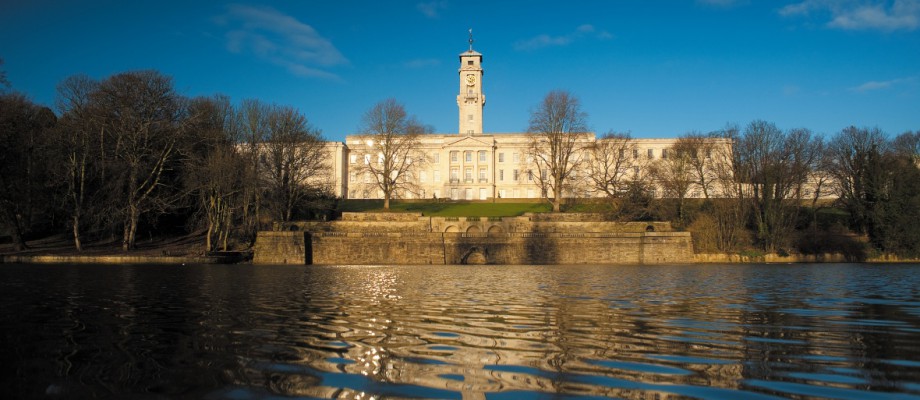
Final phase of Highfields Park restoration commences
February 4th, 2019
Nottingham City Council has this week commenced the final phase of the Highfields Park Restoration scheme. Funded by a £4.8 million Heritage Lottery Fund grant, the scheme is restoring the park to its original design, commissioned by the University’s founder Sir Jesse Boot from architect Richard Percy Morley Horder, which dates back almost a century to 1923.
The scheme has already desilted Highfields Lake and restored its surroundings including the boathouse, ticket office, historic bridges and railings. It has also enhanced the entrance from University Boulevard into the park, refurbishing the entrance gates and historic gas streetlamps, repairing footpaths, and enhancing the public croquet and golfing facilities.
The final phase of the scheme will restore the park’s historic views across Highfields Lake, including those of the lake from the north shore and of the Trent Building from the DH Lawrence pavilion.
Works to restore the views will entail the removal of a number of self-seeded sycamore trees on the north bank of Highfields Lake, mainly where they are damaging the historic Bulwell stone banking, earth retaining walls and fencing, or present a safety hazard to staff, students and members of the public.
The removal of these trees is being conducted by specialist arborists, who have performed full environmental checks for animals such as bats, timed the work to take place outside of the bird-nesting season, and will ensure any felled trees are disposed of in an environmentally sustainable manner.
New species of trees will be planted in keeping with Highfields Park’s original 1920’s design, and the Council will plant a large number of trees in other public parkland this winter including more than 4,000 at Southglade Park.
City Council Portfolio Holder for Leisure and Localities, Cllr Dave Trimble, said:
“It’s always a shame to see trees being felled and we understand people may be sad to see them go. However, many of the trees were not planted as part of the original park design – they have self-seeded and blocked out some of the views across the lake. Some are causing damage or will begin to cause damage to walls around the lake or may pose other safety concerns. Removing these means we can restore these views so people can enjoy the park as it was originally intended, and it won’t be long before the remaining trees re-establish the lovely greenery around the lake.
“Some new trees will be planted at Highfields but there is not much space at the park for this if we want to keep the original 1920s layout. However, we will plant new trees elsewhere – for example, over 4,000 trees are being planted at Southglade Park this winter.”
Andy Nolan, Director of Estates Sustainability at the University of Nottingham, said:
“We are very pleased with the improvements being made under the Highfields Restoration scheme. This means that staff, students and members of the public can enjoy the original vistas envisaged by our founder Sir Jesse Boot. It will also ensure a healthy tree population can be sustained around Highfield Lake for the next century, and complements our wider commitment to the University’s arboretum where more than 100 new trees over the last two years.”
Tags: highfields, Highfields Park, sustainability, trees
2 Comments
Leave a Reply
Other

Need news? See you on SharePoint
After 14 years of service, Campus News is being retired as the university’s staff news platform. […]

Roads and car parks closed for refurbishing work
As part of ongoing road improvements at the university, works will be taking place to resurface […]


February 6th, 2019 at 11:30 am
Cerys
Thanks for this update. I can understand removing the self-seeded sycamores, but there were 2 or 3 other trees in the same area on the north bank which I was very sad to see go – I’m not sure what trees they were but they had lovely spreading branches and beautiful pink blossom during the spring – maybe some kind of cherry tree. What was the reason for removing these, and will they be replanted?
February 6th, 2019 at 12:41 pm
Uta Feinstein
Dear Sir or Madam
I hope the Highfields restoration project all goes well. Would there be any chance to consider planting a large hedge between the children’s playground area and University Boulevard? Hedges (or at least some other form of dense shrubs/vegetation) are known to filter the air and protect the children/babies from the car fumes and particles (my children are teenagers now, but I always disliked the playground area due to the proximity to the busy road).
Kind regards
Uta